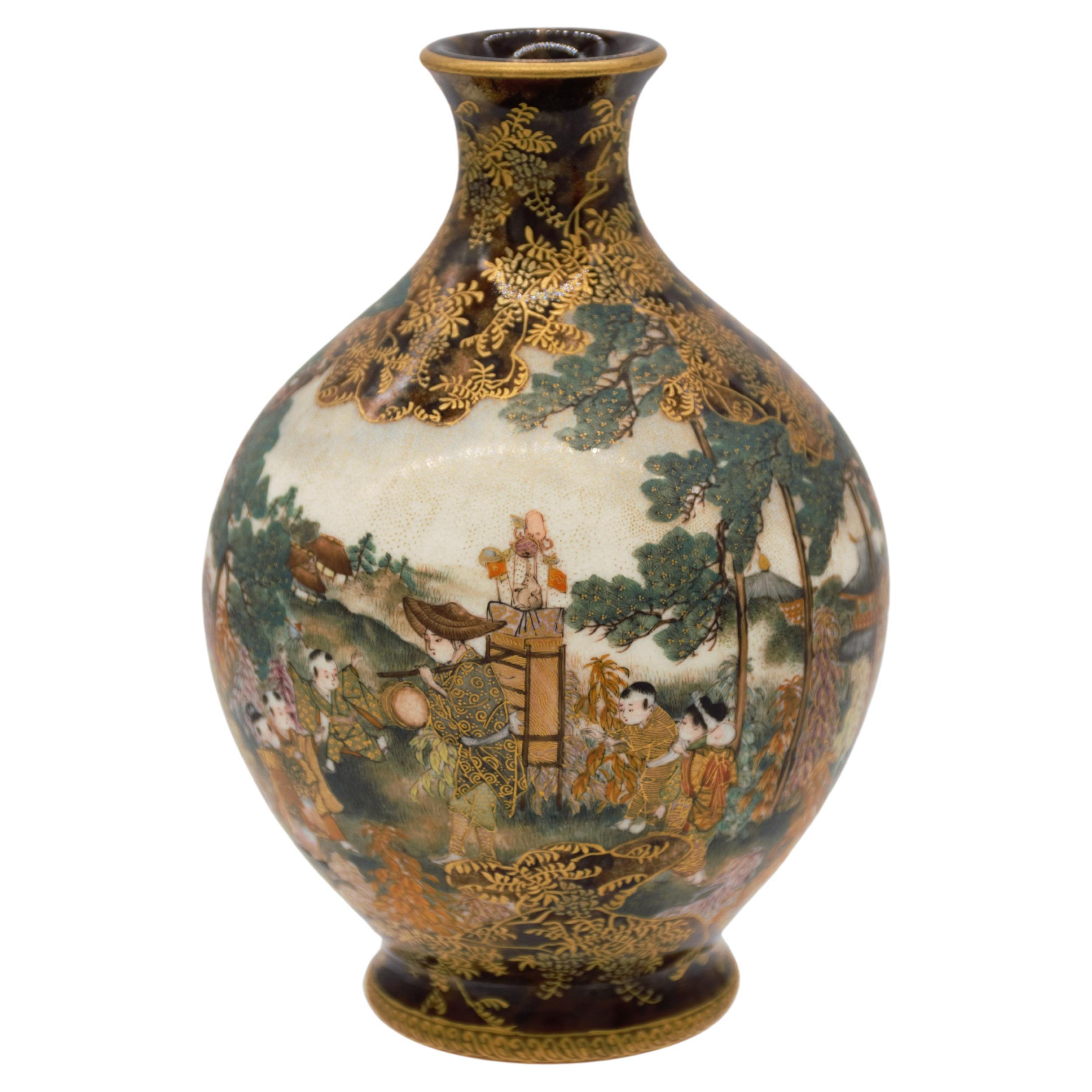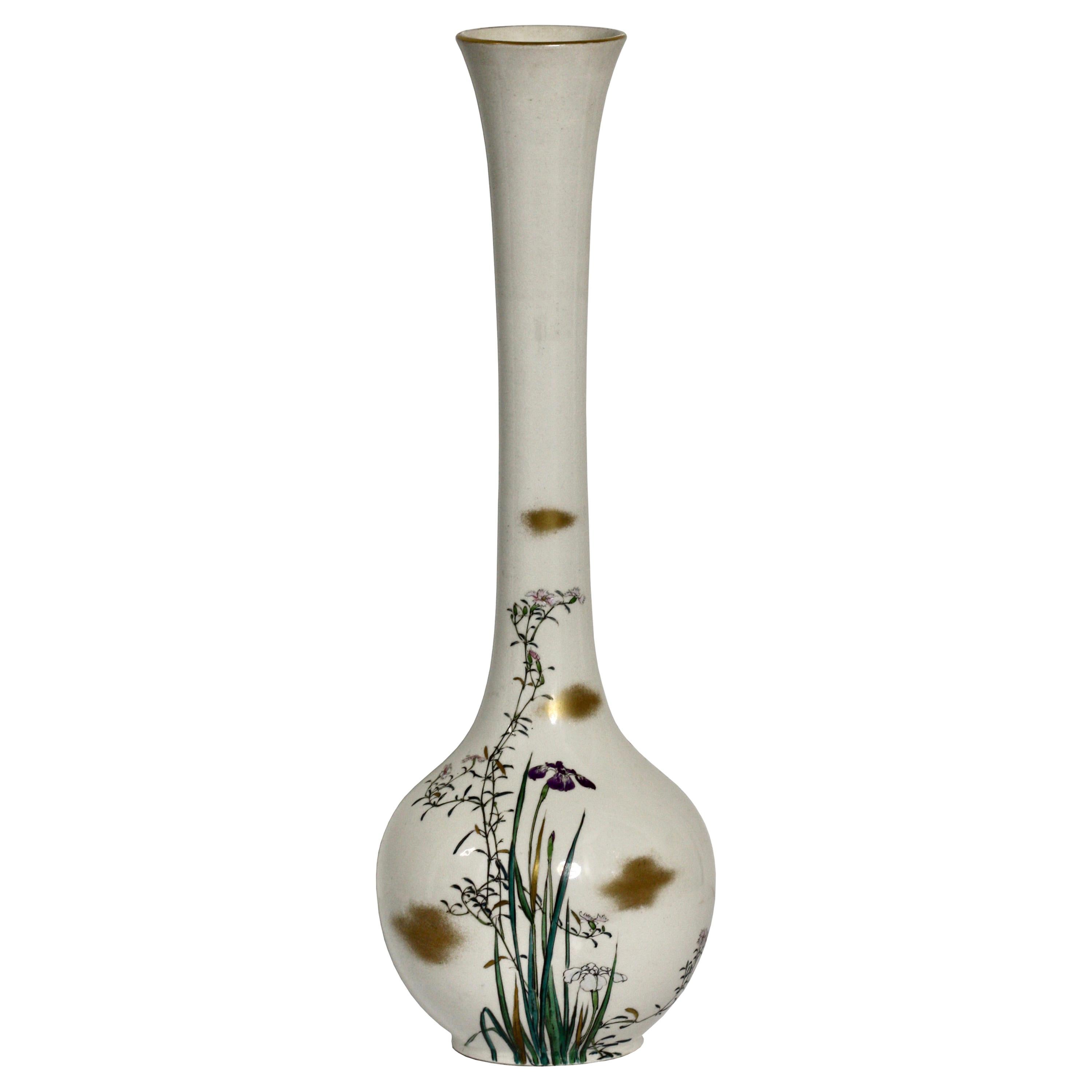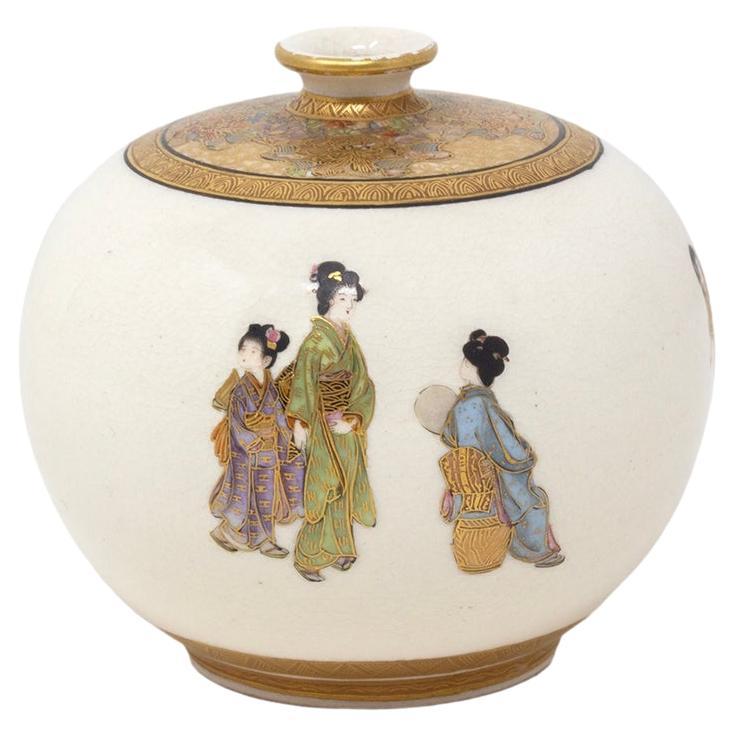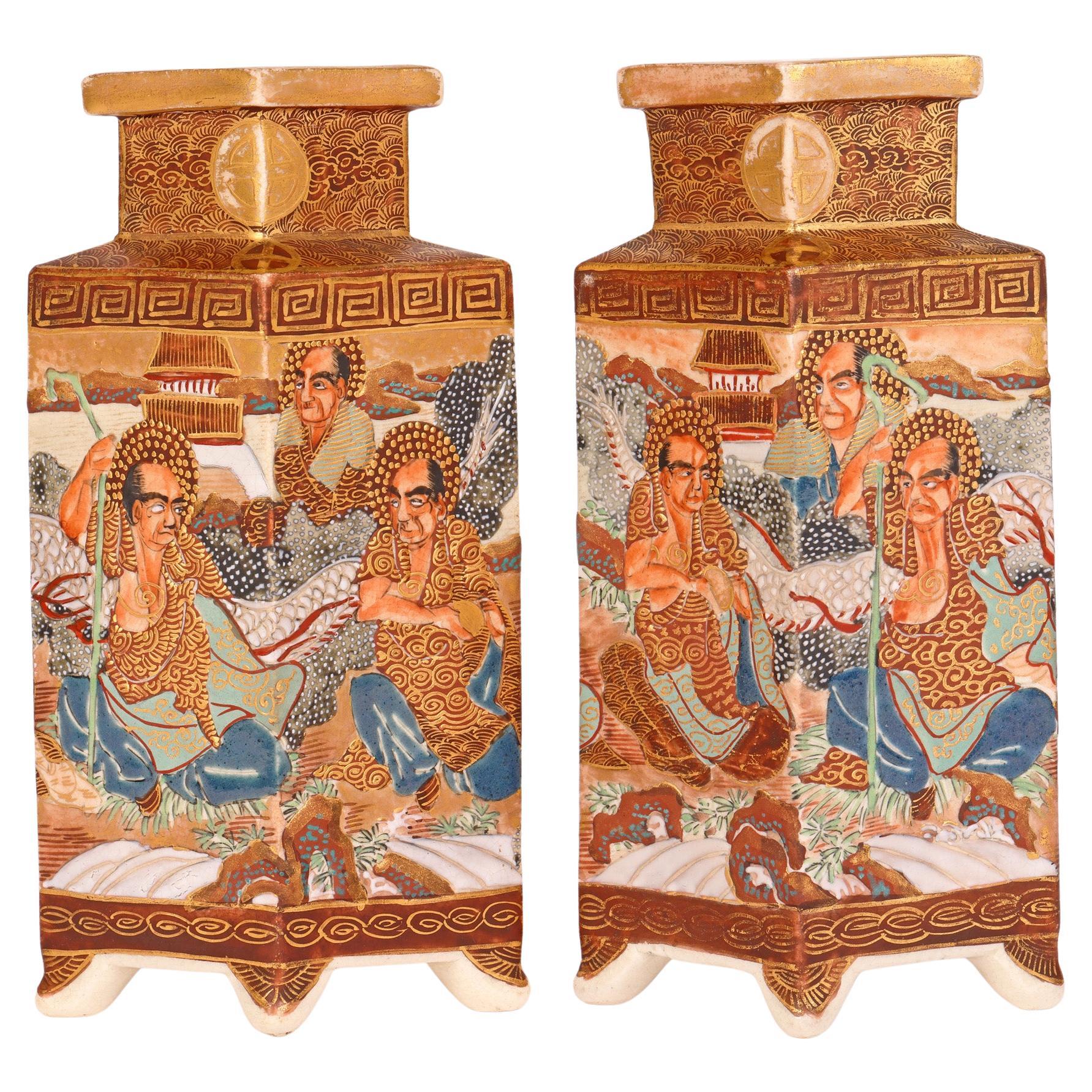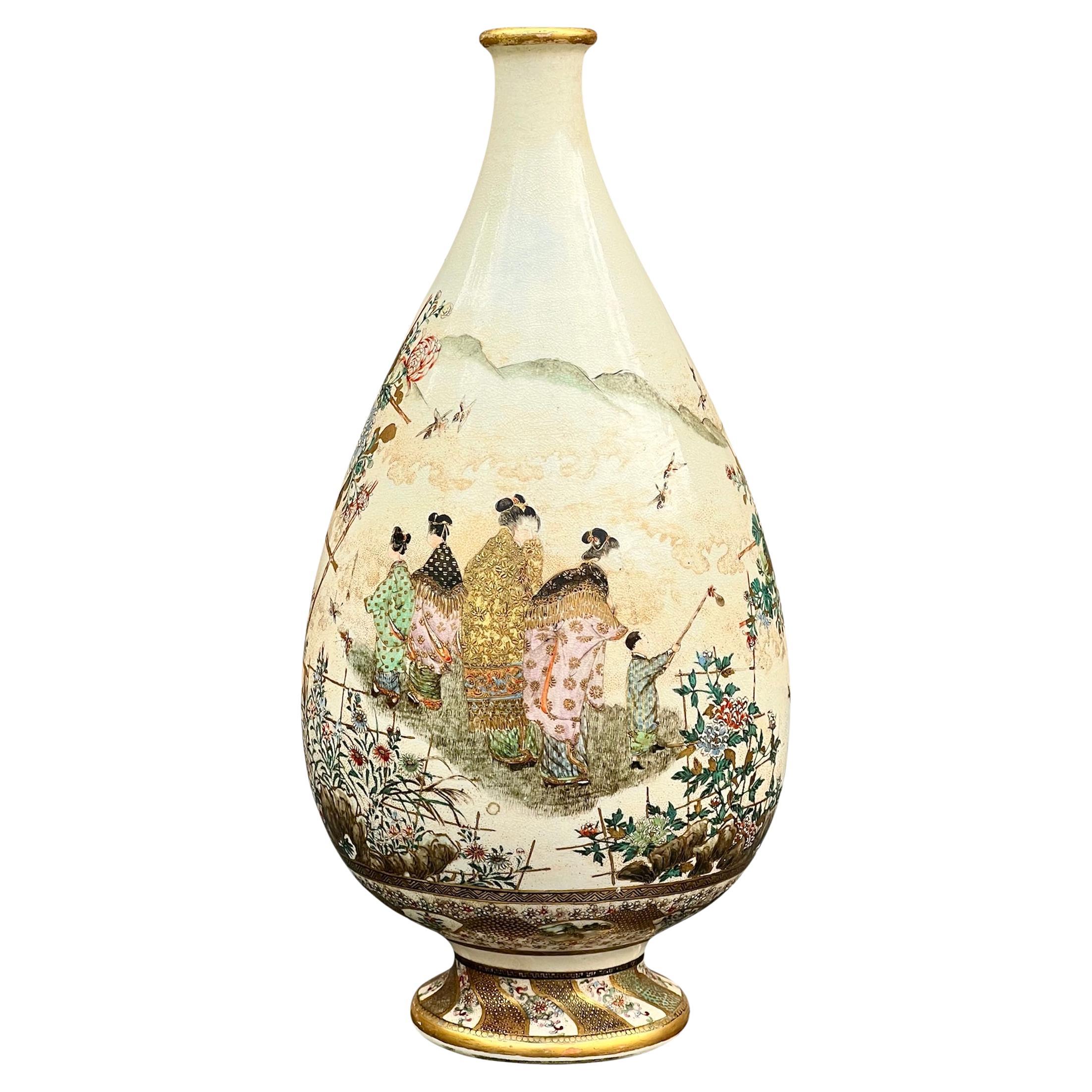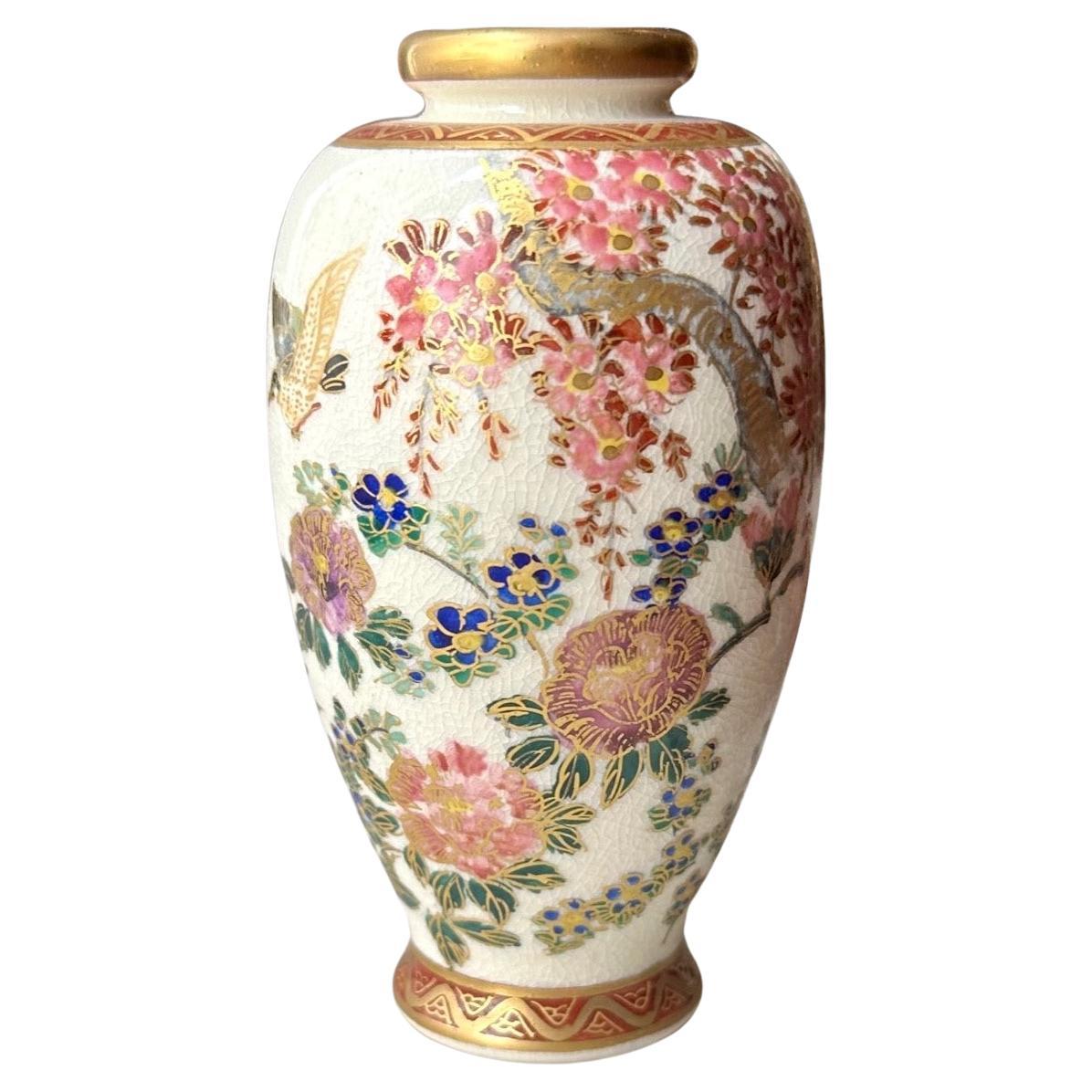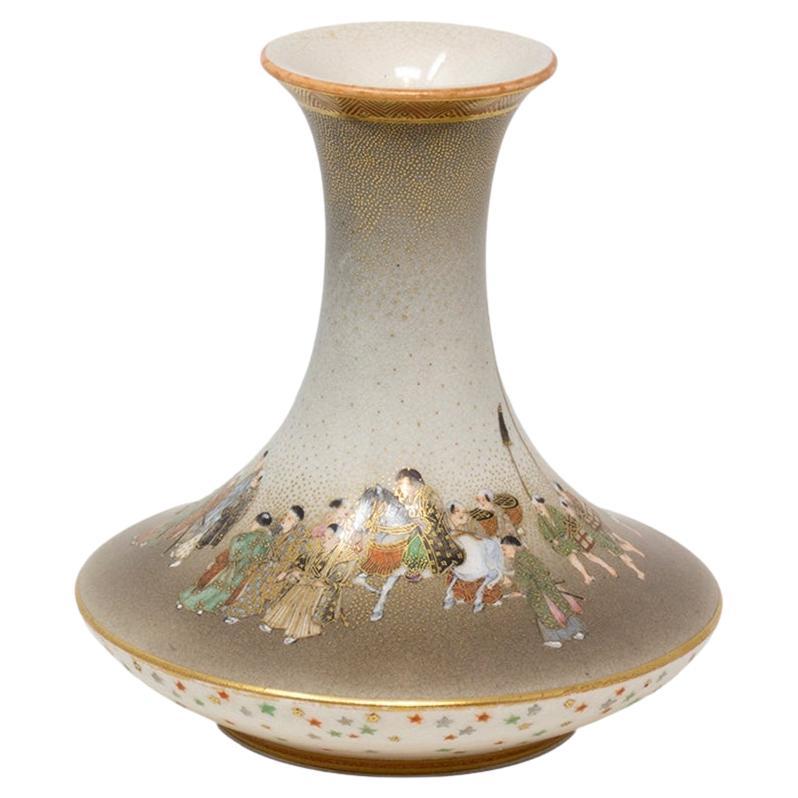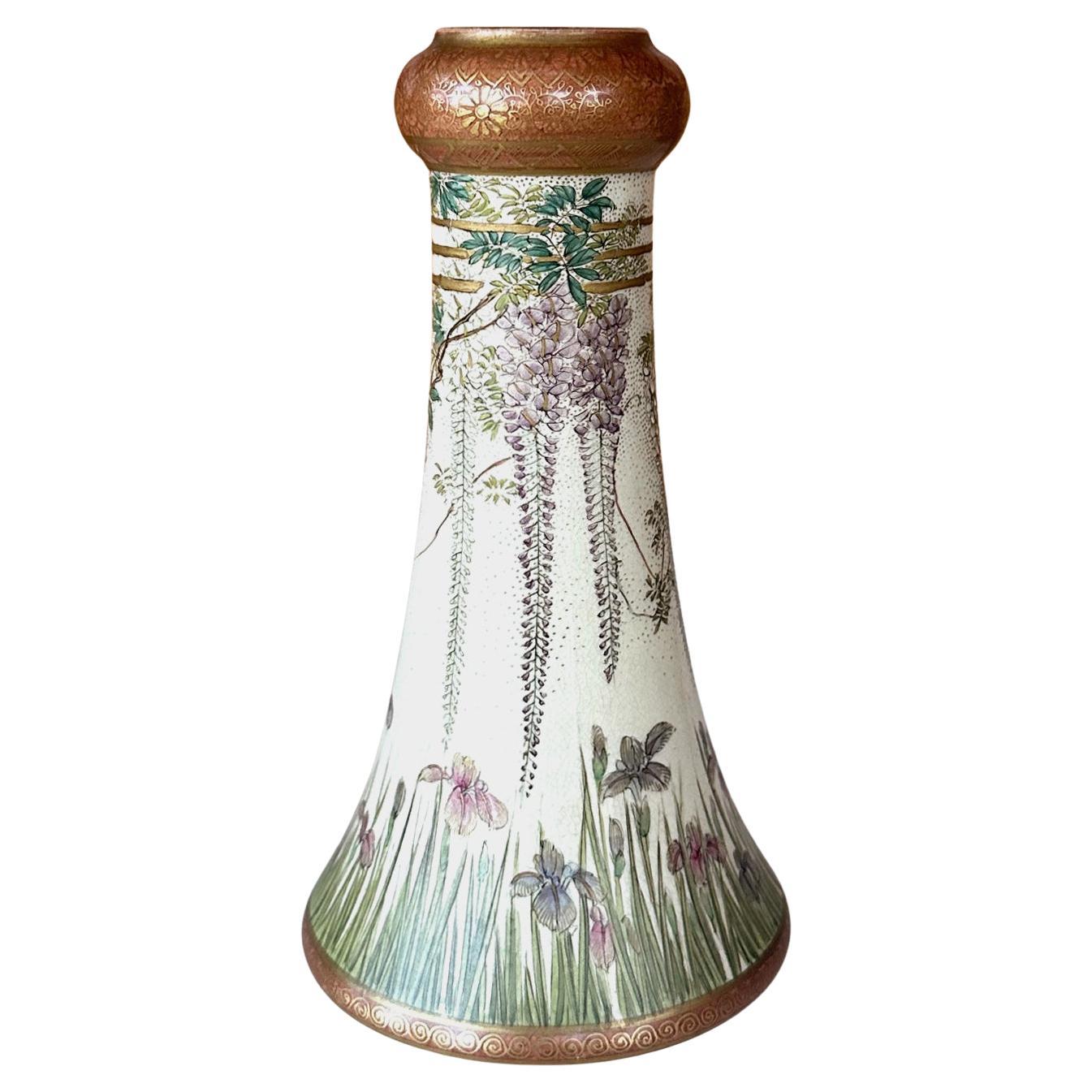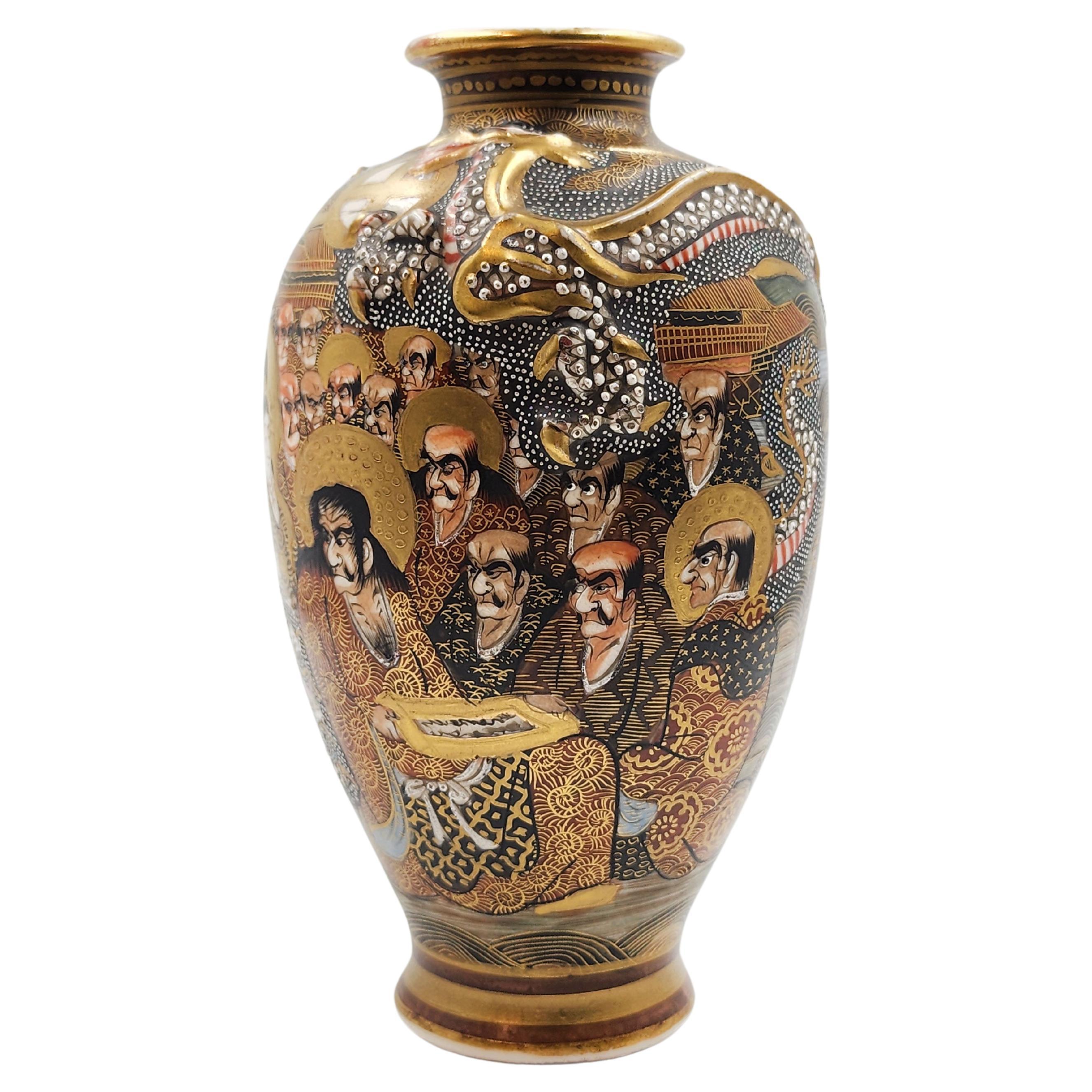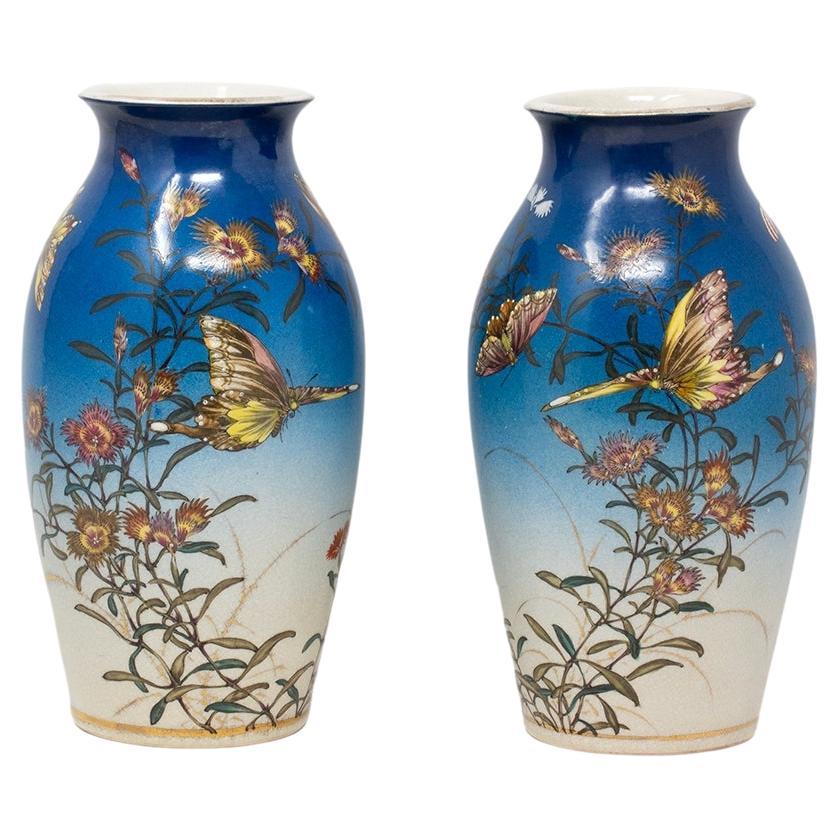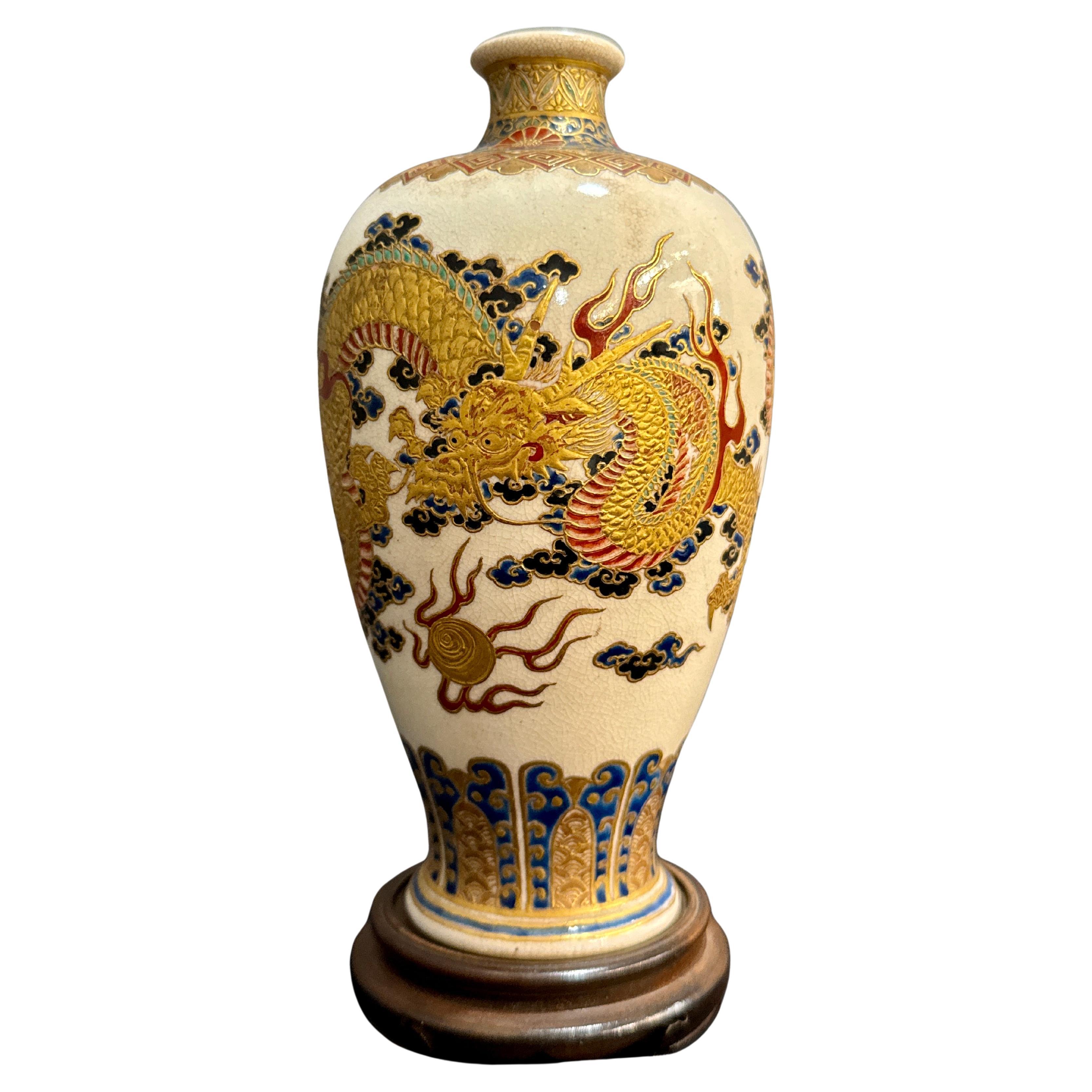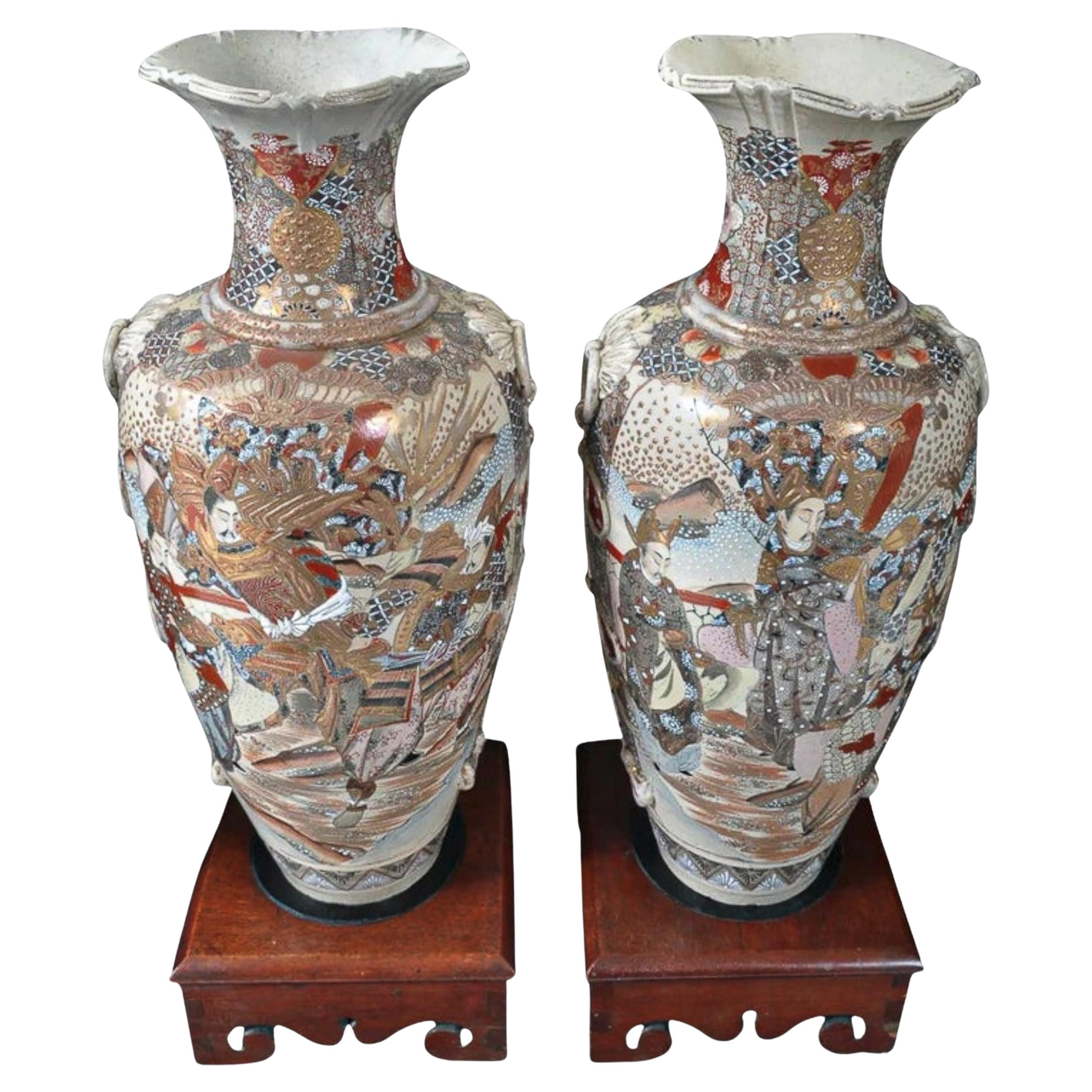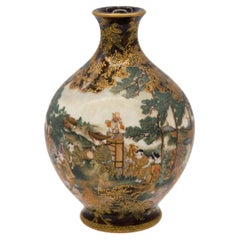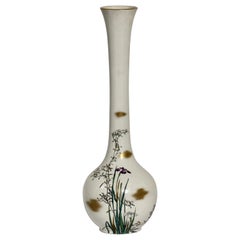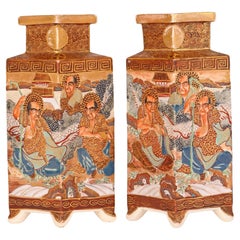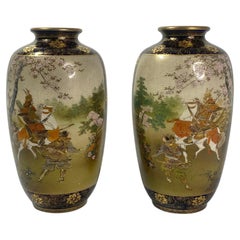
Pair Satsuma pottery vases. Samurai on horses. Kinkozan, Meiji Period.
View Similar Items
1 of 17
Pair Satsuma pottery vases. Samurai on horses. Kinkozan, Meiji Period.
$2,056.73List Price
About the Item
- Creator:Satsuma (Manufacturer)
- Dimensions:Height: 6.11 in (15.5 cm)Diameter: 3.15 in (8 cm)
- Style:Meiji (Of the Period)
- Materials and Techniques:Earthenware,Fired
- Place of Origin:
- Period:1900-1909
- Date of Manufacture:c.1900
- Condition:Wear consistent with age and use.
- Seller Location:Gargrave, GB
- Reference Number:1stDibs: LU4397131635312
Authenticity Guarantee
In the unlikely event there’s an issue with an item’s authenticity, contact us within 1 year for a full refund. DetailsMoney-Back Guarantee
If your item is not as described, is damaged in transit, or does not arrive, contact us within 7 days for a full refund. Details24-Hour Cancellation
You have a 24-hour grace period in which to reconsider your purchase, with no questions asked.Vetted Professional Sellers
Our world-class sellers must adhere to strict standards for service and quality, maintaining the integrity of our listings.Price-Match Guarantee
If you find that a seller listed the same item for a lower price elsewhere, we’ll match it.Trusted Global Delivery
Our best-in-class carrier network provides specialized shipping options worldwide, including custom delivery.You May Also Like
Satsuma earthenware vase by kinkozan, Meiji period
By Kinkozan
Located in Tel Aviv - Jaffa, IL
the body of this small marvelous vase is painted with a scene of a puppet show vendor with his wood backpack, on top of the backpack there are toys and dolls, he is surrounded with a group of 6 children, and on the background you can see a village.
on the other side of the vase there is an amazing painting of flowers and on the sides there are two amazing strong pine trees, the amorphous background is decorated in a "Tortoiseshell" color and design that gives it a real character and which is quite rare to see on satsuma pottery.
all the vase is over richly overpainted over the glaze with gold, which gives it its depth and realism.
signed Kyoto Kinkozan zo, and sealed Kinkozan zo
Kyoto’s Satsuma:
The painting technique used in Kyoto’s Satsuma-style ware is said to be the invention of the sixth generation Kinkōzan Sōbei (1824–1884). The Kinkōzan were a famous family of Kyoto Awataguchi potters who made ceramics that were used at Shōren'in, a temple closely tied to the imperial family, and by the shoguns of the Edo government. In fact the shogun is said to have granted them the name Kinkōzan. With the upheavals at the end of the Edo period, however, and the reforms of the subsequent Meiji government, the potters lost their traditional patrons and had to develop new markets.
Just at that time, the visit of a certain Westerner is said to have decided them to embark on overseas trade. By 1870, they had perfected Kyō Satsuma...
Category
Antique 1890s Japanese Meiji Ceramics
Materials
Gold
Kinkozan, Japanese Satsuma Vase, Meiji Period
By Kinkozan
Located in West Palm Beach, FL
Kinkozan, Japanese Satsuma vase,
Meiji Period (1868-1912)
Of baluster form with an elongated neck decorated in polychrome enamels and gilt on a clear crackle glaze in an Art-Nouvea...
Category
20th Century Ceramics
Materials
Ceramic
Japanese Antique Meiji Period Satsuma Vase by Kinkozan
By Kinkozan
Located in Newark, England
GLOBULAR FORM MINIATURE VASE
From our Japanese collection, we are delighted to offer this Japanese Satsuma Vase by Kinkozan. The Satsuma Vase made from earthenware pottery is potted...
Category
Antique Early 1900s Japanese Meiji Ceramics
Materials
Ceramic, Earthenware, Pottery
Satsuma Japanese Meiji Pair Diamond Shaped Pottery Vases
By Satsuma
Located in Bishop's Stortford, Hertfordshire
A good and unusual pair antique Japanese Satsuma Meiji diamond shaped pottery vases decorated with monk figures with a scrolling dragon dating from the 1...
Category
Antique 19th Century Japanese Meiji Ceramics
Materials
Pottery
A Fine Japanese Satsuma Vase . Meiji Period. Kinkozan
Located in London, GB
A Fine Japanese Satsuma Vase with Bijin, Peacock, and Chrysanthemums.
Attributed to Kinkozan Workshop, Kyoto, Meiji period (late 19th century)
Of pear-shaped form with a flared f...
Category
Antique 19th Century Japanese Ceramics
Materials
Ceramic, Porcelain
Meiji Period Diminutive Satsuma Baluster Vase.
By Satsuma
Located in Vero Beach, FL
Meiji Period Diminutive Satsuma Baluster Vase.
This Japanese Satsuma vase from the late Meiji period is hand painted and gilt decorated with a Japanese landscape in exquisite detail...
Category
20th Century Japanese Meiji Ceramics
Materials
Porcelain
$680 Sale Price
20% Off
Recently Viewed
View AllMore Ways To Browse
Samurai Vase
Antique Pottery Banks
Samurai Horse Riding
Japanese Wooden Box
Ming Dynasty Blue
Kangxi Blue And White
Chinese Incense
Japanese Hand Painted Jar
Kangxi Blue And White Porcelain
Asian Plate Display
Antique Chinese China Fruit
Asian Jars With Lids
China Coin
Chinese Coins
Cherry Porcelain
Chinese Porcelain With Peonies
Qing Dynasty Plate
Shipwreck Antique
